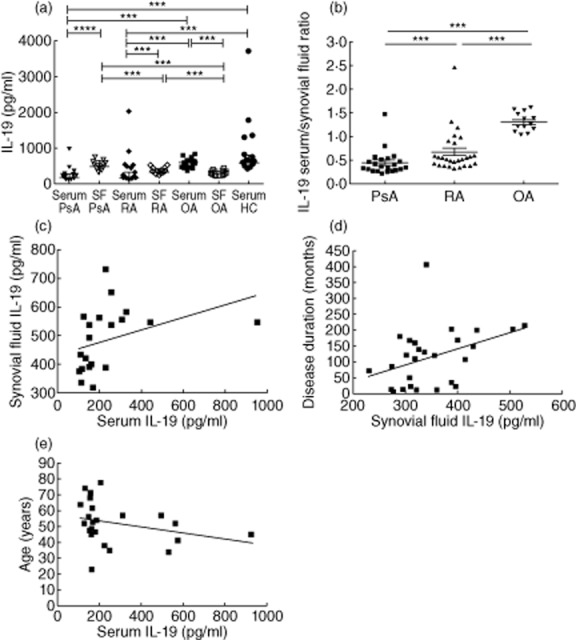Figure 3.

(a) Levels of interleukin (IL)-19 in serum from psoriatic arthritis (PsA) and rheumatoid arthritis (RA) patients were lower than those from osteoarthritis (OA) patients and healthy controls (HC). IL-19 serum levels from OA patients were higher than those in synovial fluid but similar to serum from HC. Levels of IL-19 in synovial fluid from PsA and RA patients were higher than those in respective serum. IL-19 synovial fluid levels in PsA patients were higher than those in RA and OA patients. IL-19 levels in the synovial fluid from RA patients were higher than those in OA patients. (b) The ratio between IL-19 serum and synovial fluid levels was higher in RA and OA patients compared with PsA patients. Moreover, the ratio between serum and SF was higher in OA patients than in RA patients. (c) Positive correlation of IL-19 serum levels with synovial fluid levels in PsA patients (P = 0·003, r = 0·6). (d) Positive correlation of IL-19 synovial fluid levels with disease duration in RA patients (P = 0·01, r = 0·4). (e) Negative correlation of IL-19 serum levels with the age of RA patients (P = 0·03, r = −0·4). Data in (a,b) are shown as scatter-plots. Each dot represents one sample. Lines represent the median level with interquartile ranges. Statistical comparisons between groups of patients and HC were performed by Kruskal–Wallis analysis of variance (anova) with Dunn's post-test. Spearman's rank-order correlation test was used in panels (c–e).
